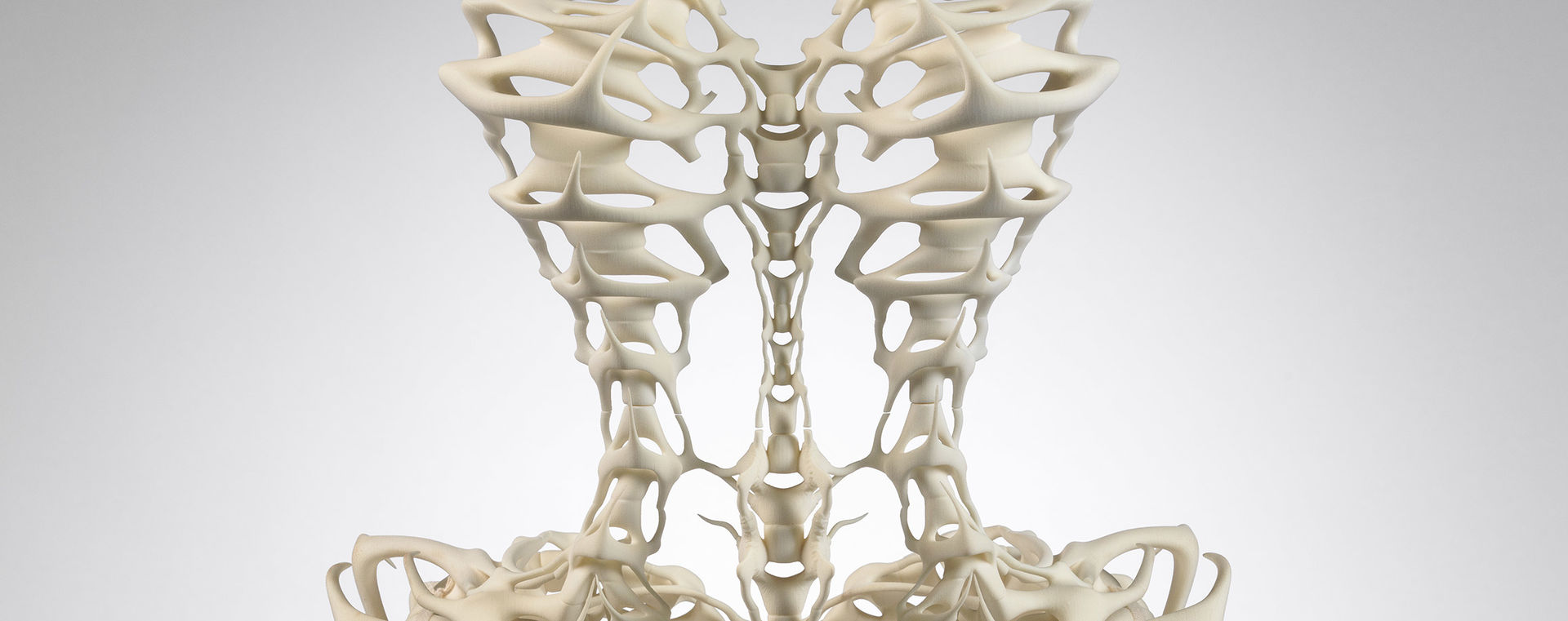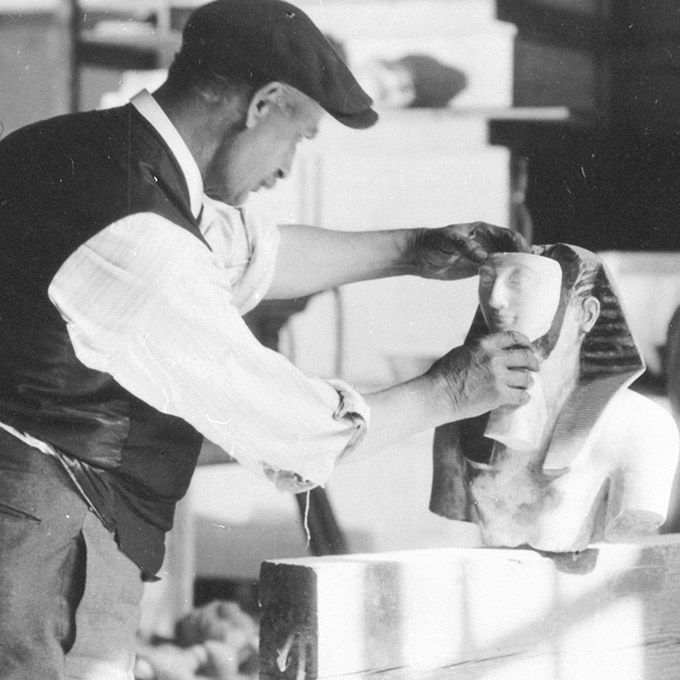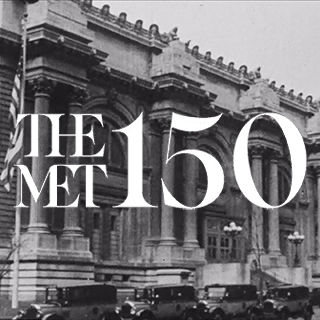
(Im)mortal Fashion: Iris van Herpen's "Skeleton" Dress
Sarah Scaturro, Conservator, Costume Institute
In 2015 the Costume Institute acquired its first 3-D–printed dress, a startling two-piece garment called "Skeleton" that appeared in Dutch fashion designer Iris van Herpen's Fall 2011 "Capriole" collection.
Defying conventional notions of wearability, this rigid, strapless dress wraps around the body like a bony carapace, not flexing for the moving body. The novel materiality of the dress, which is made of 3-D–printed nylon, also challenges the standard conservation approaches deployed by Costume Institute conservators in the preservation of fashion.
Van Herpen created "Skeleton" without using traditional haute couture sewing techniques. Instead, she turned to a 3-D–printing process known as selective laser sintering (SLS).
Technicians in the Materialise facility in Leuven, Belgium, remove "Skeleton" after it has been built with selective laser sintering and refine it through post-production techniques such as sanding. Video by Wendy van Wilgenburg. © Centraal Museum Utrecht/Wendy van Wilgenburg. Special thanks to Iris van Herpen and Materialise
The build takes place in an enclosed environment filled with nitrogen gas. Nylon powder is spread across the surface of a build platform and fused by a laser into a computer-generated shape. Once the nylon particles melt together, the build platform is lowered, another layer of powder is spread across, and the process repeats. The powder itself is maintained at a very high temperature, just below melting, to minimize warping. After the build is complete, the laser-sintered object is allowed to cool for up to 48 hours, and any excess, unsintered powder is blown off. Typical post-production processes including sanding, refining, and coating the object.
The layered manufacturing process typically gives SLS objects a ridged texture that resembles topographic lines. The fused powder also retains a porous, granular surface like that of sandstone. Van Herpen exploited the textured, naturally white, and porous characteristics of 3-D–printed nylon to evoke a bony carapace.
Unfortunately, the SLS process also damages the objects it creates. The very high temperature at which the nylon powder is kept to minimize warping shortens the material's lifespan. Furthermore, manufacturers typically use and reuse the un-sintered powder that remains to offset costs. The nylon powder used to create an object may have been held at very high temperatures during many previous build cycles, drastically damaging it.
Manufacturers are not typically concerned about damage to the nylon powder, since they use SLS to create prototypes and objects for short-term use. However, conservators in a museum are charged with ensuring that all objects that enter the collection last as long as possible—a goal difficult to achieve for an object that was only meant to live a short life.
Iris van Herpen (Dutch, b. 1984). Ensemble, fall/winter 2011–12. Polyamide, leather, acrylic. The Metropolitan Museum of Art, New York, Purchase, Friends of the Costume Institute Gifts, 2012 (2012.560a–d)
"Skeleton" is now eight years old. When it arrived at the Costume Institute, it already showed several condition problems that are irreversible and untreatable. The dress was yellowed; its porous surface was embedded with dirt and grime; and small losses had already occurred to several fragile tips of the skeletal protrusions, indicating that the dress was becoming embrittled.
To date, there is little research on how to preserve and treat 3-D–printed objects. No one knows how long this dress—or other such objects—will last, even in a controlled museum environment. Garments like "Skeleton" pose an exciting challenge for conservators, who must constantly learn new ways to approach and preserve the radical new fashions of today, as well as those of tomorrow. As van Herpen once declared:
The shortness of fashion is here.[1]
Note
[1] Iris van Herpen, Mark Wilson, Sue-An van der Zijpp, Jerry Stafford, and Sarah Schleuning, Iris van Herpen: Transforming Fashion (Atlanta: High Museum of Art, 2015).
150th Anniversary: Conservation Stories
Go behind the scenes with iconic Met objects and see what happens when science meets art.
Celebrate the 150th anniversary with special events and projects all year long.


